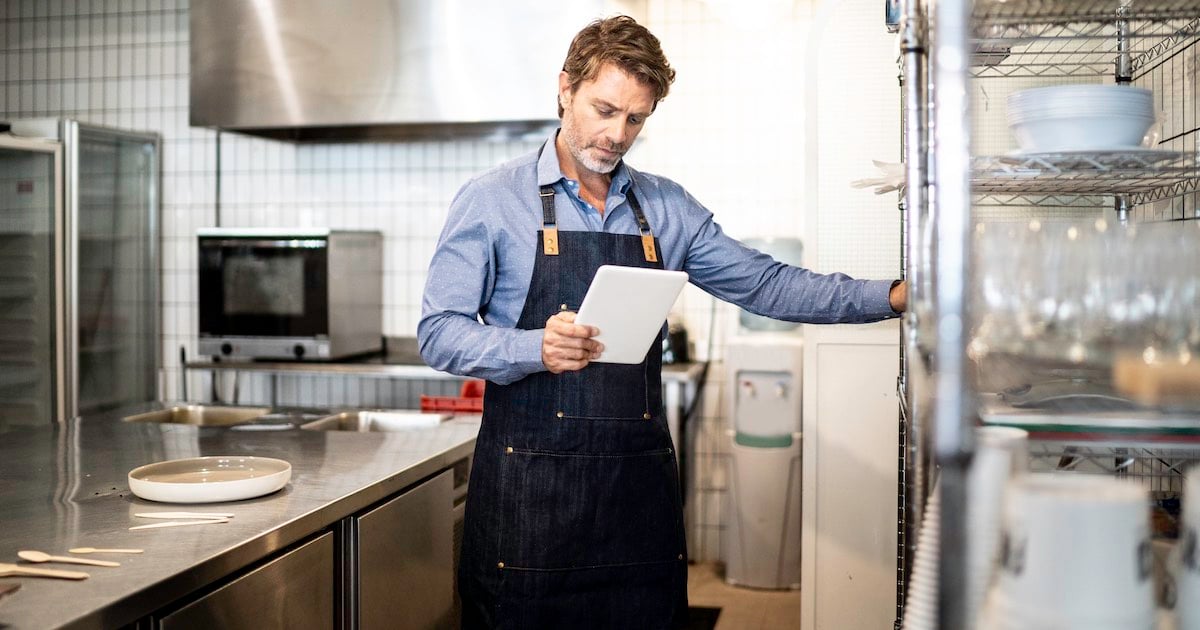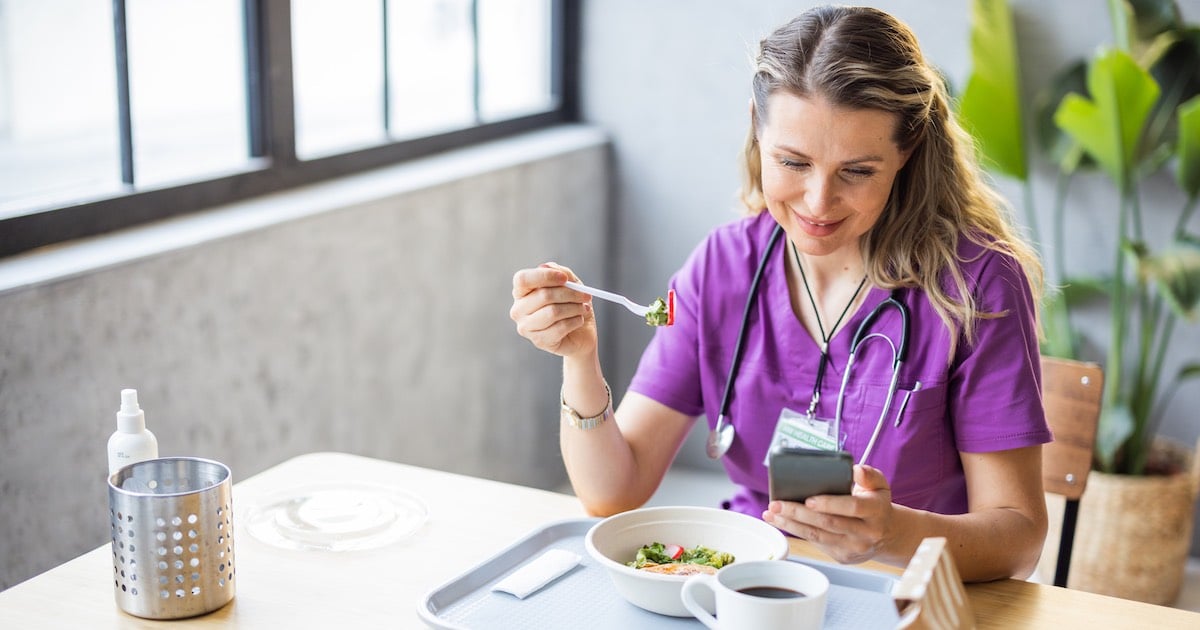Written by SmartSense | Food Safety, Food Service, Patient Safety, Healthcare
Explore solutions built for your industry
Our customer-proven solutions monitor medications and food inventories for some of the most recognizable names in the industries of healthcare, food service, and transportation, and logistics. See how our solutions adapt to your industry needs.
SEE SOLUTIONSKroger Health Strengthens Compliance Visibility with SmartSense
Watch The VideoLEARN
Questions? Call +1 (866) 806-2653 to speak to our experts.
Schedule demoQuestions? Contact us.
Call +1 (866) 806-2653 to speak with our experts or get started with a demo.
CONTACT USAbout Us
SmartSense was created to use the power of the Internet of Things (IoT) to help our customers protect the assets most critical to the success of their business.
See our storyCONNECT. PROTECT. RESULTS.
Questions? Call +1 (866) 806-2653 to speak to our experts.
Schedule demoPlease select your login
July 18, 2023
IoT Food Safety Enriches Hospital Food Service & Quality Assurance
Hospital food service operations is one of the more complicated systems within the hospitality sector. Why? Hospital menus are, first and foremost, based on the curative and nutritional needs of patients in order to support the healing process. Yet, at the same time, hospital chefs must pay attention to variety, quality, aesthetics, and taste so that patients will find the foods appealing.
Unfortunately, since hospital food is regarded first as a form of therapy and second as a source of pleasure, necessary therapeutic modifications can render meals unappetizing (e.g., low sodium, fat, and sugar). Furthermore, food safety is critical to hospital food services, particularly when preparing and serving meals for patients with compromised immunity who are therefore more susceptible to foodborne illness.
Chefs in a hospital kitchen work closely with clinical dietitians to create interesting menus that try to be — all at once — wholesome, nutritious, flavorful, and safe. In turn, clinical dietitians perform kitchen audits to ensure standards are maintained, operations are optimized, and ingredient choices maximize patient outcomes.
Aligning these culinary and clinical goals can be challenging to achieve, as many discontented patients, families, and employees can testify. Because dissatisfaction with hospital food is widespread, offering an enriched dining experience can be a significant differentiator regarding public perception of quality. Accordingly, in this post, we take a look at how investing in IoT-enabled connected food service operations can help hospitals improve satisfaction with their food service.
Chefs Serve Safe, Healthy Food at Hospitals For Optimal Recovery

Hospitals sometimes fail to live up to the ideals the public holds about their status as centers for healing. Improving nutritional outcomes for patients through healthy hospital food initiatives is, therefore, a growth area in which healthcare providers, suppliers, and public health organizations can achieve greater alignment.
With the decline in nutritional status associated with prolonged hospital stays and growth in outpatient care, it is essential that hospitals improve the nutritional value of their menus. Healthy food is critical in two ways: maximizing the patient’s outcomes while in the hospital (as well as during follow-up care at home or at a clinic) and achieving the KPIs targeted by hospital management.
In addition to nutritional value, the freshness, quality, and safety of hospital food require continuous improvements as well. Kitchen and hospital cafeteria quality assurance and operations procedures must ensure that products are stored at the right temperature and humidity.
Smart Temperature Monitoring for Hospital Food Service

Within most hospital settings, continuous asset monitoring is already in place to ensure medicines, vaccines, and blood products comply with safety regulations. While asset protections must also be in place for food, installation and implementation cannot be uniform for both. Critically, the solution’s operating procedures, automated workflows, and monitoring practices must serve the specific needs of each type of asset.
For example, chefs and clinical dietitians must satisfy different requirements than those of pharmacy directors or facilities managers. The compliance standards for medical products and their environments are more stringent than those for food safety. And because food safety temperature zones range for food and medicines differ, alert management and corrective workflows must be established to serve the distinct application in which they function.
Application functionality is just one of the challenges facing hospital food service staff. Menus can change at a moment’s notice when supply chain blockages obstruct shipments, while the labor shortage can trigger staffing gaps — both potentially compromising daily operations. On top of that, there’s always the possibility of equipment malfunction when it’s least convenient.
Because of these challenges, managers of hospital kitchens and cafeterias must consider the following factors when deciding to implement integrated technology that bridges physical and digital workflows:
- Continuous food temperature monitoring using alerts that measure pH, temperature, and humidity
- Physical tools augmented with IoT capabilities to speed up preparation, increase execution rates, and ensure safety compliance
- Descriptive insights that help facility managers anticipate predictive maintenance schedules and save energy and water while managing kitchen appliance usage
- Prescriptive workflows to guide correct action while preparing and storing food
Quality Assurance in Hospital Food Safety

The demand for quality hospital food extends beyond patients to their families and to hospital employees. Hospitals have strong incentives to set a good example for families of patients and to promote healthy eating at home after discharge. As teaching institutions, hospitals are invested in passing on lessons of wellness to their clinicians in training. And as institutions upholding the public trust, hospitals also must serve the needs of the local community, the national economy, and the global environment.
Hospital chefs and food quality managers can serve as models of healthy eating for the larger public by promoting nutritious foods, proper investment in food safety practices, and proactive partnership with third-party food service providers. Since prevention is a principal value of clinical practice — and given that many leading causes of preventable illness and premature death in the U.S. are diet-related (e.g., obesity, diabetes, heart disease) — it only makes good sense that hospitals have a stake in promoting good food as good medicine.
Food Safety Monitoring Gains Public Trust in Healthy Food Service

Hospitals are not the only not-for-profit institutions that the public trusts and expects to provide healthy food to its constituents. Children in public schools are as crucial a population as hospital patients in terms of each group’s dependence on providers other than their families to meet their nutritional needs.
Katy ISD, a leading organization in southeast Texas serving more than 94,000 K-12 students, is a great example of an educational institution that has successfully implemented IoT Sensing-as-a-Service to optimize and enrich food operations at public schools.
Previously, Katy ISD’s Nutrition and Food Service department had been using a paper-based method to record food temperatures taken by employees for its 78 kitchens. That process made managing food safety and HACCP compliance difficult, as employees sometimes would forget to write temperatures down or would record false temperatures merely to show compliance. Additionally, the existing paperwork in Katy ISD’s menu management software, PrimeroEdge, featured only three instances for temperature recording — cooked temperature, whole temperature, and serve temperature.
Collaborating with SmartSense, Katy ISD achieved the following objectives:
- Digital HACCP Compliance: SmartSense provided Katy ISD with a platform for intuitive management of food safety and HACCP compliance along with access to real-time data and reports from any location, 24/7. The SmartSense solution increased the frequency and accuracy of critical temperature measurements, providing visibility into product quality and operational execution across all 78 kitchens.
- Automated Flow of Food Temperatures: SmartSense experts held training sessions with Katy ISD kitchen employees and Nutrition and Food Service department staff, teaching them how to use SmartSense Smart Shields to automatically record temperatures during critical food processes. The new tools replaced burdensome paper-based manual logging with real-time temperature recording automatically stored in the cloud. Automated workflows provided in the easy-to-use Smart Shields created a framework for improving completion rates and confirming corrective actions.
- Integration with PrimeroEdge from Cybersoft: SmartSense’s exclusive menu integration partnership with PrimeroEdge enabled complete integration between the SmartSense digital HACCP management platform and PrimeroEdge’s menu management software, thereby providing Katy ISD with seamless workflows for menu planning. During implementation, SmartSense and PrimeroEdge managed background setup, profile creation, and menu integration for easy deployment.
In this video testimonial, Dagmara Gujda (Associate Director of Compliance, Nutrition and Food Service, Katy ISD) and Jodie Defrancesco (Assistant Director, Nutrition Services, Pasadena ISD) share how SmartSense helps their school districts easily achieve HACCP compliance, automate menu integration with PrimeroEdge, and ensure food safety for thousands of students.
As the case of Katy ISD illustrates, providing quality food is critical to not-for-profit organizations, such as hospitals and schools, that are trusted by the public to deliver the nutritional and dietary requirements of the populations they serve. When patients, students, families, employees, and the larger public witness hospital and school kitchens and cafeterias taking extra care to use healthier and safer ingredients in their food service, they have greater confidence in the institution overall.
Subscribe to the SmartSense Blog
Stay up-to-date on the evolution of IoT connectivity.
CONNECT. PROTECT. RESULTS.
Learn how our complete critical
environment monitoring solution will help you
connect and transform your business.
Call +1 (866) 806-2653 to speak with our industry
experts or get started by
requesting a demo.